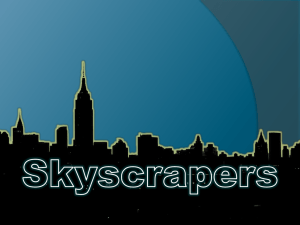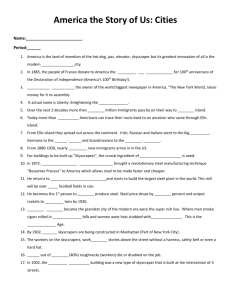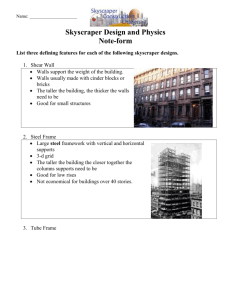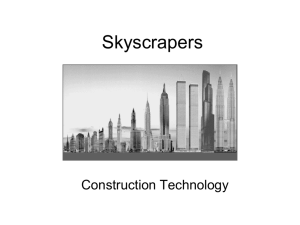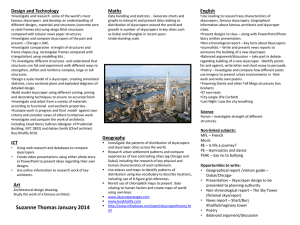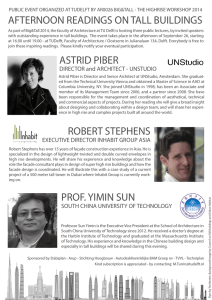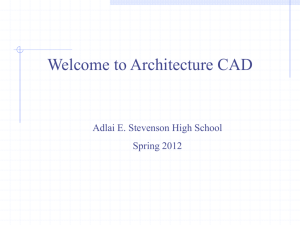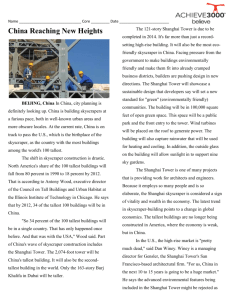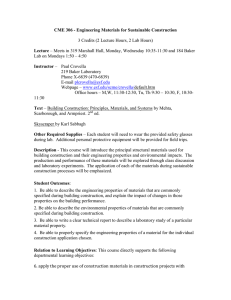Skyscrapers
advertisement
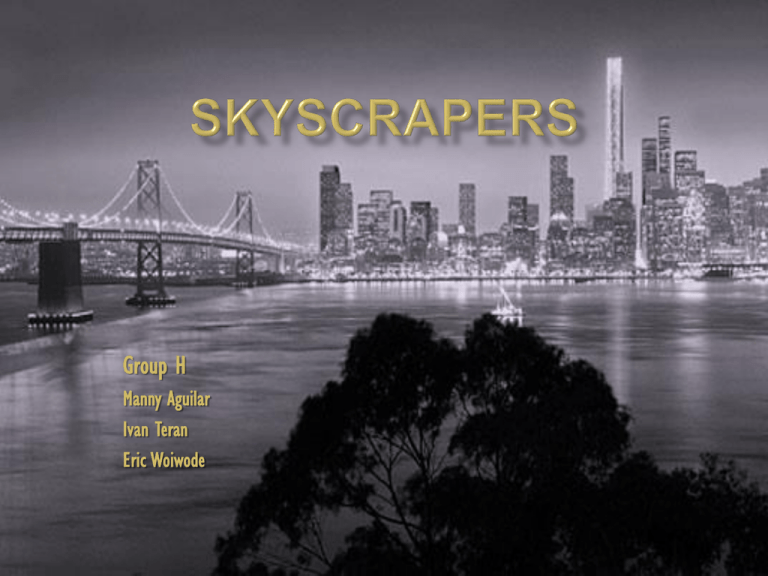
Group H Manny Aguilar Ivan Teran Eric Woiwode Skyscraper originally referred to the tall, main sail of a ship The structural definition is based on the fact that the buildings have a steel frame Today, it refers to a very tall and habitable building There is no actual height which determines if a building is a skyscraper U.S. and Europe share a loose convention that 150 m tall is considered a skyscraper, while 300 m tall is “supertall” ADVANTAGES Land area Option to build up, rather than out Creates habitats for a larger number of people Creates more space for businesses Corporations build skyscrapers for name recognition and promotional value i.e. Sears, Chrysler, Bank of America and Donald Trump DISADVANTAGES Utilities Construction Deaths Spreading of illness Emergency Situations Terrorist Attacks Large buildings have always been used to show affluence and power Height of these buildings was limited Buildings higher than six stories were rare 16th century - Shibam, Yemen 17th Century Edinburgh, Scotland Defensive city wall limited area to build Homes increased in height; 11 stories were common, and some records show homes with 14 stories The Flaxmill, 1797 – Shrewsbury, England “Grandfather of Skyscrapers” built with an iron frame, which led to the steel frame used in modern skyscrapers Home Insurance Building, 1884-1885 – Chicago, Illinois Wainwright Building, 1891 – St. Louis, Missouri Developed by Major William Le Baron Jenney; Led to the “Chicago skeleton” form of construction Some consider this the first true skyscraper built due to its use of vertical bands, which emphasized its height Late 19th Century saw many taller buildings going up Most were built in Chicago, New York and London Technological advances have paved the way for bigger and better skyscrapers Safe Elevators Water pumps Building Materials Improved techniques for measuring and analyzing structural loads and stresses Invention of electric arcwelding Fluorescent light bulbs Foundation Skeleton Exterior Finishing Taipei, Taiwan Topped out in 2003 at 1,671 ft (509 m) At the 87th floor a 800 ton tuned mass damper is held Eight tiers of eight stories Building costs approximately 1.7 billion Kuala Lumpur, Malaysia Tallest twin towers 1,483 ft (452 m) 88 stories plus architectural spire Geometric patterns originating in ancient Islam Two construction companies were hired Chicago 1,451 ft (tallest in US) Cost was 160 million 76,000 tons of steel 72,000 cubic yards of concrete Bundled-tube structural design On a clear day you can see four states Completing date mid 2009 Predicted to be the tallest man-made structure in the world Records Tallest free standing structure Building with most floors Vertical concrete pumping (for a bldg.) Vertical concrete pumping (for any construction) http://en.wikipedia.org/wiki/Skyscraper http://www.infoplease.com/spot/skyscraperhistory.h tml http://skyscraperpage.com/ http://www.emporis.com/ http://www.uaepropertytrends.com/ptrends/mvnfor um/viewthread?thread=1145
